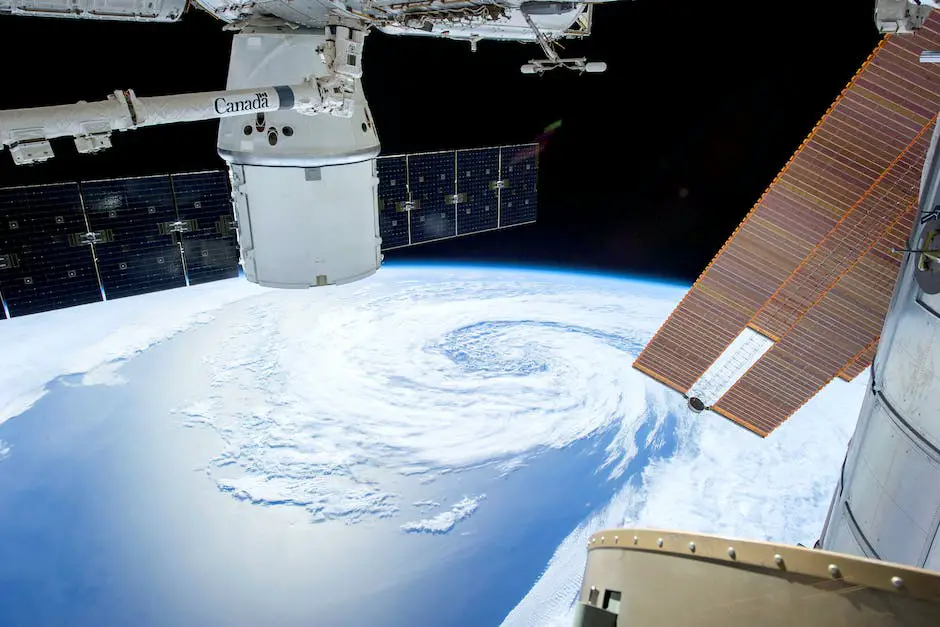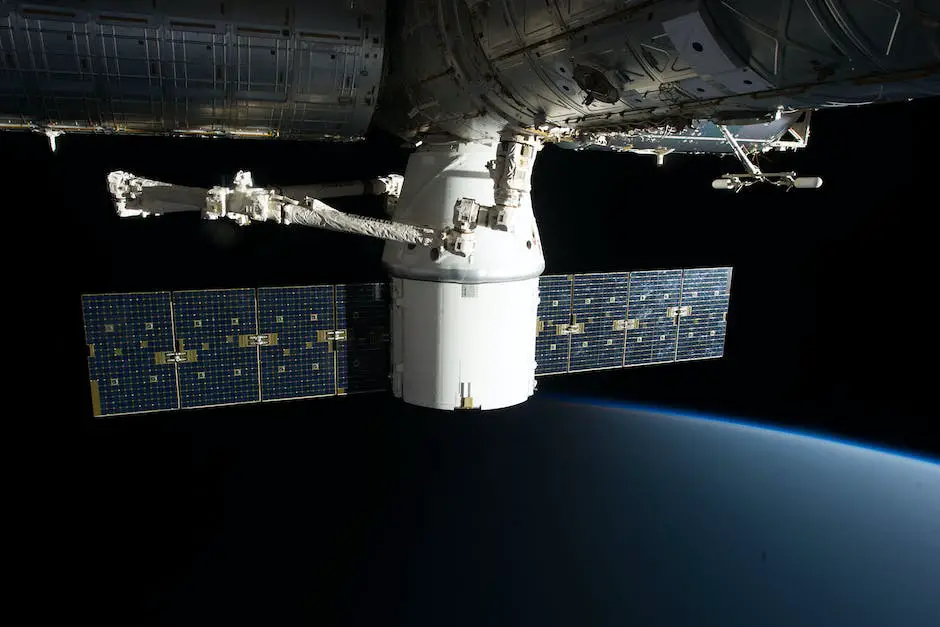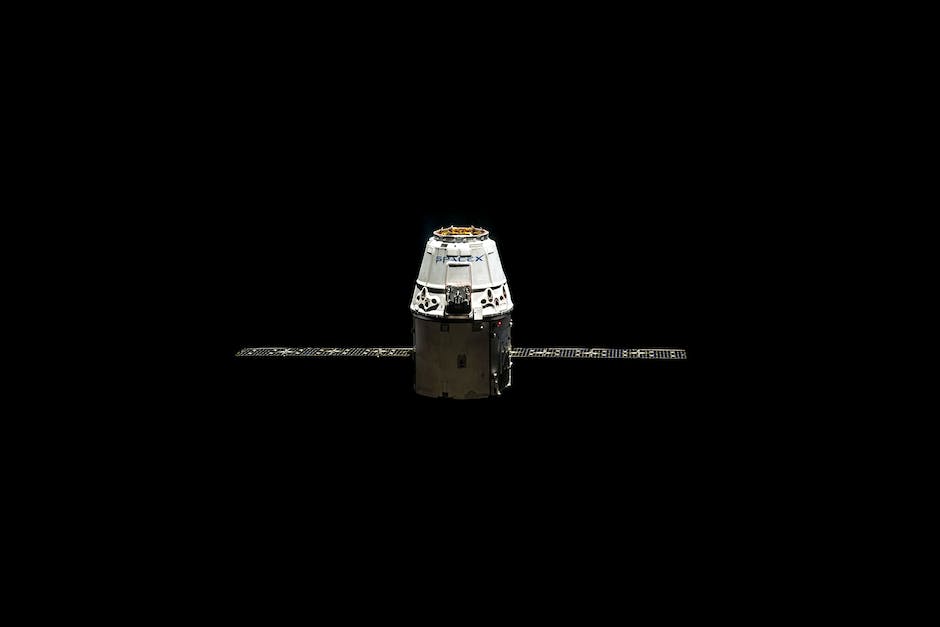The Apollo program, revered as one of humankind’s most significant advancements in space exploration, acted not only as a vessel of discovery for human beings but also played a pivotal role in the maturation of satellite technology. Established during the heat of the space race, Apollo’s overarching objective lay in landing humans on the moon, an ambitious target that accelerated incredible technological growth. However, the cosmic voyages of Apollo ventured beyond this, fostering innovations that continue to shape our lives today, particularly in the realm of satellite technology. Pouring immense effort and resources into accomplishing this grand endeavor, Apollo charted a course of scientific and technological breakthroughs that contributed to the evolution of the satellite systems we rely on in our modern world.
Contents
- 1 The Apollo Program: A Brief Overview
- 2 Apollo’s Technical Innovations
- 3 Direct Apollo Contributions to Satellite Development
- 4 Indirect Impacts of Apollo on Satellite Tech
- 5 Apollo’s Legacy in Modern Satellite Technology
- 5.1 Origin of Satellite Technology: Apollo’s Contribution
- 5.2 Satellite Tracking and Trajectory Analysis – Apollo’s Indelible Contributions
- 5.3 The Apogee of Computer Tech: The Apollo Effect
- 5.4 Incorporating Solar Power Into Satellite Operations
- 5.5 The Evolution of Multilayer Insulation
- 5.6 Apollo’s Influence on Satellite Imaging
The Apollo Program: A Brief Overview
The Apollo Program: A Brief Overview
The Apollo program is one of NASA’s most historic undertakings in the sphere of space exploration. Initiated in 1961 and culminating in 1972, the manned lunar spacecraft mission undeniably revolutionized our understanding of space and Earth’s celestial neighbors. Driven by a Cold War-era competition with the Soviet Union, the Apollo Program worked towards ambitious goals set by President John F. Kennedy – landing humans on the Moon and returning them safely to Earth.
The Apollo program engendered numerous groundbreaking advancements and achievements. These include six successful manned lunar landings, the pivotal Apollo 11 mission marking the first time humans set foot on the moon, and 12 astronauts successfully walking on the lunar surface. Furthermore, the Apollo missions returned over 840 pounds of lunar rocks and soil to Earth, facilitating extensive scientific exploration.
Apollo’s Contribution to Satellite Technology
In the process of accomplishing these awe-inspiring feats, the Apollo Program sparked significant advancements in satellite technology. While the primary goal was lunar exploration, the flat spin stabilization technique developed for the Apollo Lunar Module has been applied to modern satellites. This technique is used to evenly disperse the heat from the sun and minimize temperature gradations across the spacecraft.
Additionally, the Apollo program marked the first significant use of telecommunications capabilities in space. The technological feat of providing live TV broadcast from the moon during Apollo missions necessitated tremendous advancement in satellite communications. The technology used in the Apollo missions also paved the way for the subsequent development of GPS systems.
The remarkable SATURN V rocket engines crafted for the Apollo Program have played a crucial role in advancing satellite launch technology. SATURN V continues to be one of the primary inspirations behind current heavy-lift launch vehicle designs, credited for having carried not only the Apollo missions but also several significant satellites into space.
Influence on Modern Satellite Technology
The Apollo Guidance Computer (AGC) was another key development of the Apollo Program that contributed significantly to modern satellite technology. It was one of the first integrated circuit-based computers and it guided the Apollo missions across 240,000 miles of space to the moon and back, making it a precursor to the modern-day, computer-guided navigation systems used in satellites.
Satellite imagery technology also borrows heavily from technology developed during the Apollo Program. The lunar orbiter used in the Apollo missions to capture detailed images of the moon’s surface provided a groundwork that has contributed to the development of Earth-observation satellites.
Moreover, without the Apollo program, commercial satellite communication might not be as advanced as it is today. The program paved the way for the development and continual enhancement of communication satellites, which are now fundamental for global telecommunication infrastructures.
Considering the vast and fundamental influence of the Apollo Program’s contribution to satellite technology, it’s clear that these advancements have been monumental. Various features we take for granted in our satellites today, such as advancements in thermal control and upgraded telecommunications abilities, originated as side-projects during the Apollo era.

Apollo’s Technical Innovations
A particularly significant achievement of the Apollo program was the improvement and expansion of satellite communication and navigation networks. The necessity of unbroken communication with extraterrestrial vehicles located hundreds of thousands of miles away led to the enhancement of worldwide satellite systems. Consequently, a web of ground stations capable of receiving and transmitting signals from spacecraft was established. Today’s modern global satellite communication networks are built on this very infrastructure.
Miniaturization of Technology
The Apollo program faced the challenge of sending cutting-edge technology into space using rockets with limited space and weight capacities. This prompted the drive to miniaturize sophisticated technology, including computers, to fit within the spacecraft. For example, the Apollo Guidance Computer, one of the first integrated circuit-based computers, was designed specifically for the Apollo mission. This drive towards miniaturization has greatly impacted the design and production of satellites, where space, weight, and energy efficiency are prime concerns.
Digital Image Technology
Apollo program’s need for high-resolution imagery to study the lunar surface led to the development of digital image technology. The Lunar Orbiter missions captured image data on 70mm film, which was then automatically developed onboard the spacecraft and scanned into strips for transmission back to Earth. This process was a pioneering move for digital imaging, crucial in the design and use of imaging satellites today.
Materials Science and Engineering
The Apollo missions required the development of new materials and structures, resilient enough to withstand the harsh conditions of space travel. Heat shields based on ablative materials were created to protect the astronauts and equipment during re-entry. The materials developed for the Apollo missions, including heat resistant and radiation shielding materials, continue to be used in satellites today, protecting delicate instrumentation from the harsh environment of space.
The Impact on Earth Observation Satellites
Apollo’s on-ground and in-orbit remote sensing of Lunar surface provided extensive knowledge in remote sensing methods which later contributed to the evolution of earth observation satellites. Matching what Apollo did for the Moon, these satellites assist in studying the Earth’s atmosphere, oceans, and land surfaces. These innovations born from the Apollo program have been invaluable for weather forecasting, environmental monitoring, and disaster management.
The Apollo program has been instrumental in pioneering an array of technological advancements, many of which have profoundly influenced the growth and sophistication of satellite technology. Equipping us with the contemporary systems of communication, navigation, and observation, the innovations hailing from Apollo have truly revolutionized the field.

Direct Apollo Contributions to Satellite Development
The Role of Apollo in Satellite Advancement
The Apollo program, a laudable venture by NASA that successfully landed humans on the moon, has had far-reaching implications beyond space exploration. Its pivotal role in shaping the realm of satellite technology is irrefutable. The remarkable technological breakthroughs originating from Apollo have indeed propelled the evolution of communication, weather, and navigation satellites.
Impact on Communication Satellites
The advancements in telecommunications technology, sparked by the Apollo missions, laid the foundation for the communication satellites we use today. The Apollo Guidance Computer (AGC), for instance, was a groundbreaking technological feat at the time. It demonstrated that digital computer technology could be used reliably in space, paving the way for the development of advanced onboard computer systems for satellites.
Another profound impact of Apollo is its influence on digital signal processing techniques. The Apollo Lunar Surface Experiments Package (ALSEP) included seismic experiments that required the conversion of analog signals to a digital format. Similar digital signal processing techniques are critical to today’s satellites for communication and data transmission.
Influence on Weather Satellites
Apollo missions led to significant advancements in sensor technology, specifically those related to thermal control and radiation detection. These sensors are used in modern meteorological satellites to detect thermal radiation from the Earth. This sensor technology is critical in predicting weather patterns, measuring sea surface temperatures, monitoring the health of our planet’s vegetation, and informing climate change studies.
Further, Apollo’s extensive photographic surveillance of Earth and the moon’s surface necessitated the development of the Apollo Lunar Surface Close-up Camera (ALSCC). This technology indirectly led to the creation of high-resolution imaging systems used in weather satellites today, offering us high-quality, detailed images of weather patterns.
The need for precise navigation during the Apollo missions led to various advancements in GPS technology. During Apollo, NASA developed a new technique called ‘transponder tracking,’ where a signal was sent to the spacecraft, which would immediately re-transmit the signal back to Earth.
The time of flight for the signal allowed a determination of the distance from Earth to the Apollo spacecraft. By measuring this delay from multiple locations, mission control was able to calculate the spacecraft’s exact location. This real-time tracking and calculation system heavily influenced the development of today’s Global Positioning System (GPS).
Moreover, the highly accurate atomic clocks used in the Apollo mission to track the minute details of spacecraft movement are similar to those used in GPS satellites today.
A streamlined overview of Apollo’s lunar journey reveals that it led to the inception and perfection of various technologies. Significantly, some of these inventions have profoundly influenced the design, creation, and operation of communication, navigation, and weather satellites. Today, Apollo’s legacy still flourishes through these technological advancements that enable us to explore and comprehend our planet and the cosmos beyond.

Indirect Impacts of Apollo on Satellite Tech
The Lingering Impact of Apollo’s Technological Innovations
Though the Apollo missions are famous for their primary accomplishment, humans landing on the moon, their influence extended far beyond this monumental event. In fact, these missions played a pivotal role in shaping our current satellite technology. During the Space Race era, Apollo’s state-of-the-art computing and navigation systems engendered a global culture of technological innovation, which significantly influenced many scientific fields, including satellite technology.
The Apollo Program’s technological needs pushed NASA scientists to invent more compact yet efficient computers, setting the foundation for modern microprocessors. This technological downsizing immensely benefited satellite creation and design. The need for precise tools to monitor and map the moon’s surface drove the advancement in imaging and sensing technology. These improvements were instrumental in refining the capabilities of satellite imaging.
Driving Public Interest and Policy Changes
Osborne explains that the public eye was drawn to space exploration largely because of the Apollo missions. This heightened public interest in space acted as a catalyst, encouraging investment, research, and development across space-related programs, a significant part of which was satellite technology.
The surge in public interest influenced policy and financial decisions, resulting in increased funding for space programs. The Apollo lunar missions led Congress to increase NASA’s budget substantially, which in turn benefited the development and launch of numerous satellites. The enhanced focus on space research due to such momentous funding commitment thus indirectly benefited satellite technology advances.
Stimulated Competition and Global Collaboration
The Apollo program spurred a competitive spirit during the international Space Race, prompting the Soviet Union and other countries to increase their efforts in space exploration and satellite development. This intensified competition also spurred technical advancements as nations strove to surpass each other’s latest achievement.
On the flip side, the Apollo program also opened avenues for global cooperation in space exploration and technology. The primary success of Apollo in achieving the manned moon landing played an instrumental role in the creation of international treaties and agreements on space exploration, many of which involved satellites. This created a collaborative global effort in the domain of satellite technology.
Apollo’s Legacy and Influence
The Apollo missions may have concluded decades ago, yet their impact persists, particularly as seen in the continued development and evolution of modern satellite technology. These missions, notable for their emphasis on technological innovation, research, development, and commitment to funding and global cooperation, paved the way for many advances in today’s satellite technology. Although the destination was the moon, it’s clear the ripple effects of this landmark effort have had far-reaching outcomes and continue to influence the trajectory of global satellite technology.

Apollo’s Legacy in Modern Satellite Technology
Origin of Satellite Technology: Apollo’s Contribution
Run by NASA from 1961 to 1972, the Apollo program was a series of space missions that culminated in the first human steps on the lunar surface. Alongside this grand achievement, the program delivered an array of ground-breaking technologies, the foundation of which is still recognized in current satellite systems.
Central to the success of the Apollo missions was the development and utilization of the Unified S-band (USB) system. This novel radar-communication system—quite different from its predecessors—was integral in ensuring smooth command, communication, and control of the spacecraft. A similar technology is now a cornerstone in present-day satellite systems, facilitating communication links between the satellites in orbit and their ground-based controllers.
Satellite Tracking and Trajectory Analysis – Apollo’s Indelible Contributions
One of Apollo’s major contributions was in the realm of satellite tracking and establishing the Deep Space Network (DSN). The Apollo missions needed very precise tracking and trajectory analysis, which were performed using the spacecraft’s S-band signal. The DSN, with its global positioning of telescopes and antennas, allowed round-the-clock tracking of the Apollo missions, while providing a template for similar networks today.
The development of digital signal processing (DSP) is another mark of Apollo’s legacy. DSP was used to eliminate noise interference and improve the quality of moon-based communications. Today, DSP has become a staple in enhancing the quality of satellite imagery, weather forecasts, and GPS signals.
The Apogee of Computer Tech: The Apollo Effect
The Apollo missions necessitated the development of the ‘onboard flight software,’ a predecessor of the onboard computing system seen in today’s satellites. Realizing that manual navigation to the moon was fraught with peril, NASA developed small, lightweight computers embarked on the Apollo missions.
This was a giant leap in the field, shrinking room-sized computers into a small box while offering astronauts autonomous navigation capabilities. Present-day satellites, equipped with far more advanced and miniaturized onboard computers & software, owe a lot to this initial Apollo innovation.
Incorporating Solar Power Into Satellite Operations
The harnessing of solar power, another major breakthrough, was integral to the success of the Apollo missions. The lunar module, on its journey to the moon, had solar panels that captured and converted sunlight into electricity, efficiently powering the spacecraft without adding much weight. Today, most satellites and space stations use solar energy as their primary power source.
The Evolution of Multilayer Insulation
Thermal control technology, specifically the multilayer insulation (MLI) technology, also significantly evolved during the Apollo program. Protecting the spacecraft and its inhabitants from temperature extremes in space was vital, and the use of MLI – a lightweight, reflective, radiation-based thermal control system – made this possible. Today, satellites employ similar insulation mechanisms to protect their sensitive electronic components from temperature fluctuations in space.
Apollo’s Influence on Satellite Imaging
The Apollo missions also contributed significantly to the advancement of imaging technology. The high-quality photographs of the moon and images of various celestial bodies captured using the moon-landing module’s camera were unprecedented. These systems, designed to withstand extreme space environments, serve as templates for modern-day satellite imaging systems, facilitating meteorological forecasts, earth observations, and astronomical studies.

From the wind-swept surface of the moon to the bustling control rooms back on Earth, the Apollo program ignited a era of technological innovation that still illuminates our world today. Even as the footprints on the moon could not, the imprints of Apollo’s influence on satellite technology have not ebbed over time. Its exceptional legacies lie strewn across a multitude of domains, from weather forecasts to global connectivity and precision navigation, casting a lasting shadow of influence. Today, as interstellar ambitions continue to thrive and new frontiers of space beckon to be explored, the heritage of Apollo remains, guiding our venture into the cosmos, fortifying the power of satellite technology, and enriching our embrace of a universe that holds the promise of infinite possibilities.
